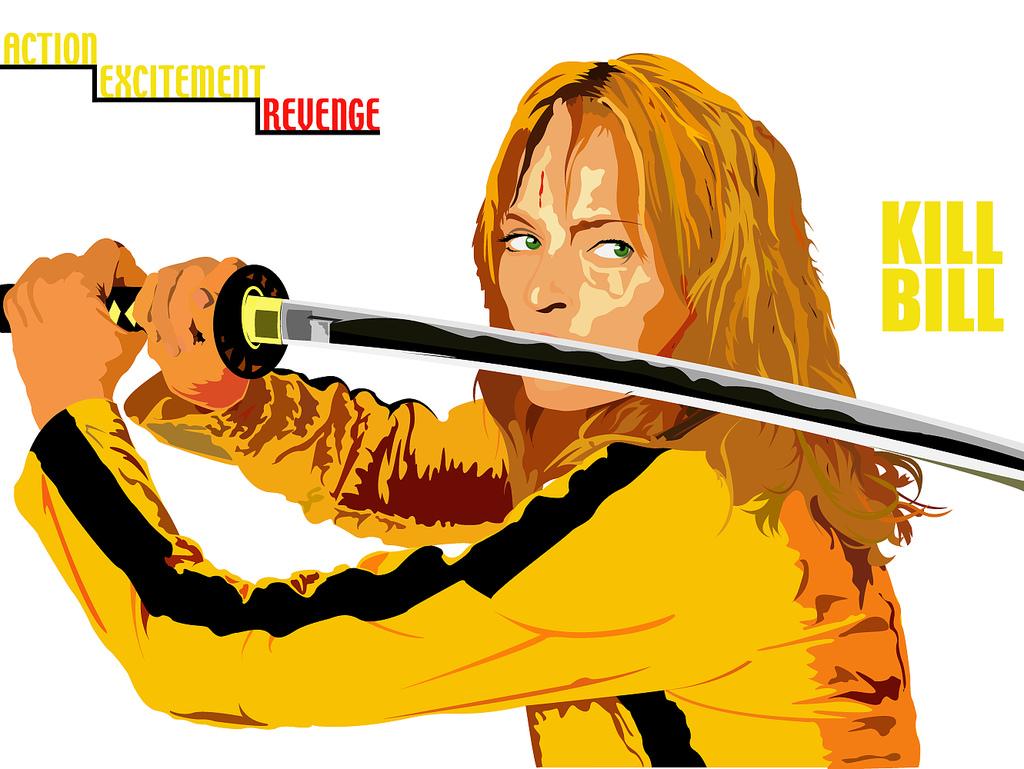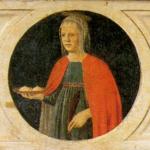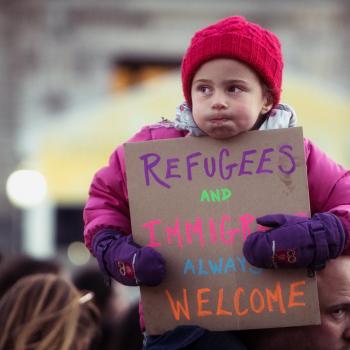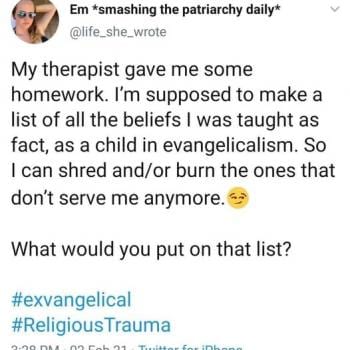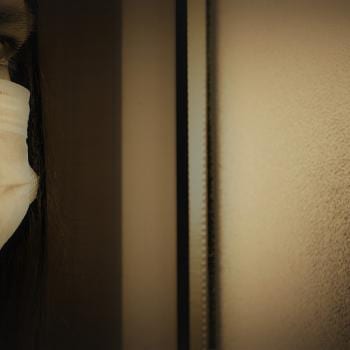One of my favorite phrases from Flannery O’Connor is in her short story, “A Good Man is Hard to Find,” in which she describes the mother of the family, a passive and almost inert 1950s housewife, as having a face “as broad and innocent as a cabbage.”
Innocence. It’s what we try to protect in our children; it’s taken to be cognate with goodness. We mourn the loss of some mythic “original innocence.” But O’Connor shows it as looking like blankness. A vegetative state.
Vegetables are innocent, and animals may be, but humans are not. I’m not talking about original sin, here, by the way, but simply stating the reality that we are existentially alert to good and evil, and too frequently end up choosing evil, or maybe sort of bumbling into it. Wherever we go, we wreck things: our bodies, our relationships, our property, our planet. Our frantic scrambling after better bodily health, greener energy, are usually just races against the destructive energies our systems have already set in motion.
This is not to say that our inclinations to protect our children are mistaken, or that we should just go ahead and rub their noses in grim human reality as soon as possible. If innocence is a state of not yet knowing how bad and difficult things can be, children should be able to pursue their innate curiosity and follow trails of wonder unperturbed by existential angst about death, or the realities of war and genocide.
So, there is a time in life when “safety” means not only rules about playing in roads or taking candy from strangers, but also rules about what can and can’t read or see. But then this time passes. The fledglings leave the nest. It’s not so safe out there, but we do our best: we learn defensive driving techniques, get our immunizations, carry pepper spray in unsafe areas. And within whatever parameters of safety we choose to draw, we may also take risks: diving into abandoned quarries, smoking forbidden herbs, going home with intriguing strangers.
And now we read the books that were withheld to us before. We can see whatever films we like, go to plays with full, in-real-life nudity. We can take it further, and go to strip clubs and sex shows. We can learn how to beat people up. Really smash their faces in.
At some point, reasonable exploration of risk can turn into the sort of self-destruction mentioned above. People become drug addicts, porn addicts, sex addicts. Some are enamored of violence. And there are plenty of forms of destructiveness – capitalism, for instance – which are considered perfectly acceptable. Risk-takers who “create” (ha) wealth are praised.
But how safe can we expect our life to be? How safe can we expect our art to be?
I want to focus, for now, on the world in which art is made (I’ll write, soon, about the world in which it is experienced).
In the history of art and artists, it’s difficult to ignore how often great talent is coupled with difficult personality. Google “why artists drink” and the entries will go on and on. As an article in The Irish Times points out:
Alcohol has played a central role in the creative lives of some of the most famous authors of the last few centuries. Lewis Hyde notes in his essay Alcohol and Poetry that four of the six Americans who have won the Nobel Prize for Literature were alcoholics, namely William Faulkner, Eugene O’Neill, Ernest Hemingway and John Steinbeck.
Walker Percy wrote a memorable essay on why writers, in particular, tend to be drunks: it has to do with knocking out the barrier between the left brain and the right brain. Yes, I think, and pour myself a generous bourbon on the rocks. He’s right.
There are also articles that warn us that drinking in order to unlock creativity is not a great idea. It destroys talent, and sometimes lives. And while this is true, there seems to be some tragic mechanism at work that places talent in close proximity to a tendency to addiction and self-destructive behavior. This comes out in relationships, as well. It seems to be more difficult for artists to maintain stable relationships, even though the qualities required in an artist – empathy, discipline, love of beauty – would seem also to make for good relationships. I’ve had discussions with other writer friends, though, about what sort of artist would be the worst in a relationship: painter? Musician? Fellow writer? Actor? There’s an element of doom in every direction.
This topic of bad behavior and artists takes on a special importance right now, as we are learning more and more about abuses behind the scenes in Hollywood. Did we really think this stuff wasn’t going on? It’s hard to connect art that one enjoys with violence and injustice, especially because art is supposed to be always on the side of justice. Tyrants silence the artists first for a reason.
A few days ago, a musician friend with whom I started an amateur theatre company, years ago, brought up the question: can art ever really be safe? Can art happen in safe spaces? Even in community theatre, there was so much emotional turmoil brought to the surface, yelling and melodrama, despair and self-hatred. Oh, yes, and we drank heavily. Our recycling bin, spilling over with PBR cans and cheap wine bottles, was a source of shame. There were hookups, too. That’s the theatre life.
But there’s a vast difference between two actors hooking up, on an equal footing – and Weinstein forcing women to perform sex acts. The question is, at what point do we start drawing lines, to keep the “wild theatre life” from turning into “rape culture”?
And then there’s bad art…
Putting too much restraint on the artist ends up resulting in bad art, art in which a kind of middle-class morality gets enshrined, art in which the costumes can’t even be period, because of cleavage. Where you’re not allowed to explain the double entendres in Shakespeare, because some mythic innocence must be protected.
And I think this is because the role of art is not simply to affirm us in where we are at the moment, but to challenge our preconceptions and prejudices, to force us to look where we didn’t want to look, to take in the entire scope of human depravity as well as heroic virtue. This is a challenge, ultimately, to any humanistic optimism, and even to the Christian belief in grace. You want to believe in the human spirit? Fine. Then let’s be real about it.
So a certain pushing past the boundaries is necessary. But, to draw on an old Nietzschean distinction, one needs the Apollonian as well as the Dionysian. One needs restraint. In the film Black Swan, we see an artist’s navigation of these polar extremes: too disciplined, she makes art that is “perfect” yet somehow dead, dead as a marble statue. Once she taps into her dark side, out comes the wildness. Suddenly her art comes to life – but kills her, in the process.
Art without restraint is also bad art, though. Look at Tarantino’s films, for instance: Pulp Fiction was a masterpiece of grotesque comedy and violent grace, but then he got sloppy. You get the idea that he became fixated on his own power to depict monstrous, unbelievable violence and get away with it. It’s implausible and pointless, but it’s Tarantino, so it’s okay. Everything is okay, for the artist.
Ann Hornaday, writing for the Washington Post, poses a theory about the dangers of the “auteur” – the powerful, usually male artist with a cult of personality and authority over his artistic underlings. In “Uma Thurman, Quentin Tarantino, and the costs of auteur worship,” she states:
“Since the “auteur theory” was imported from France to the United States in the late 1950s and early 1960s, the term has earned value as a marketing hook, not just for movies but for the men who make them: The mystique of Terrence Malick has prompted name actors to work on his films for relative peanuts, just for a chance to work for him — even if they risk ending up on the cutting-room floor. Up until now, Woody Allen has used a similar business model based on reflexive adoration, not just from actors but also loyal audiences who can be relied upon to see whatever movie he makes, even if it’s a tired rehash of his cardinal themes of death, moral culpability, sexual insecurity, alienation.
Whether it’s Malick and Allen or David Lynch, Martin Scorsese and Wes Anderson, auteurs count on their audiences to internalize the filmmaker’s anxieties, fetishes, fears and appetites, and take them on as our own. As often as not, those preoccupations are benign — and can be illuminating and provocative when they’re artfully plumbed.
What Thurman’s accusations against Tarantino reveal is how willing too many filmgoers are to go along with those impulses, even when they take a more pathological turn. As Jessica Chastain tweeted over the weekend, “How many images of women in media do we celebrate that showcase abuse? When did this become normalized ‘entertainment’?” The answer can be found in how men created a medium in their own image, with their ideas of what’s attractive and interesting and sexy and morally serious — commonly called “the male gaze” — becoming canonized as epic and cinematic, while women’s experiences were marginalized as niche and inconsequential.”
Art doesn’t have to be sanitized to be good, but it has to be good, and it has to be true, to justify scenes of exploitation and violence. And it seems that once that delicate balance between being dangerous and being good gets tipped, the quantity of the “unsafe” in the world of art-making verges beyond that of the moderately charming vices, the human frailties, into the monstrous. Art requires restraint as well as risk, and usually what most needs to be restrained is the tendency to view the other as mere object, to let the art become nothing but a giant projection screen for the ego.
Avoidable Risks?
It is unavoidable that the world of art will be a dangerous one, but just because we know something is dangerous doesn’t mean we throw caution to the winds. When I teach horseback riding, I know perfectly well that what we’re doing could kill us – and that’s why I emphasize the safety rules. Keeping the safety rules makes us better riders, too, and makes for happier horses.
So, too, in the world of theatre, cinema, writing – we know we’re flirting with danger, and that’s exactly why we need to have certain restrictions in place. And not only because otherwise what we do will be excessive, pointless, self-indulgent. It’s necessary to preserve justice. To protect people. After all, remember that ethics question: if you’re in a burning house, and you have to choose between saving a Rembrandt painting, and saving a smelly old drunk, which do you save?
You know the answer.
You don’t like it (at least, I don’t) – but you know it.
There’s sacrifice demanded by art, but this doesn’t mean you sacrifice the lives of others on the altar of your ego, or to sate your desires. The sacrifice has to be of your own ego and desires: that might be why we drink, because this shit is hard.
Violence within art should be violence restrained by art, positioned by art. And personally, I love art that depicts violence for what it is, because then when you see those moments of grace you know they’re true. They aren’t tacked on as artificial happy endings to make you feel good. Human companionship, generosity, forgiveness: when these have survived in the midst of war and betrayal, you know they aren’t just flimsy imitations. That’s what makes A Song of Ice and Fire (and, for the most part, Game of Thrones) so great.
Facing the Gun
The Grandmother in O’Connor’s story is the one who claims to be more than just innocent. She knows herself to be good. Or so she thinks. When it comes down to it, though, her goodness is as sham as fake flowers. It doesn’t stand up in the literal wreck of her entire life. But there’s something else there, beneath the middle class white supremacist “virtue” and it flickers into life, at the very end. When there’s a shotgun pointed at her.
“She would have been a good woman,” her killer says, “if it had been somebody there to shoot her every day of her life.”
That’s what art is trying to do, maybe. Point a virtual shotgun at us.
But only a virtual one.
Image credit: flickr.com/photos/iheartgiraf

